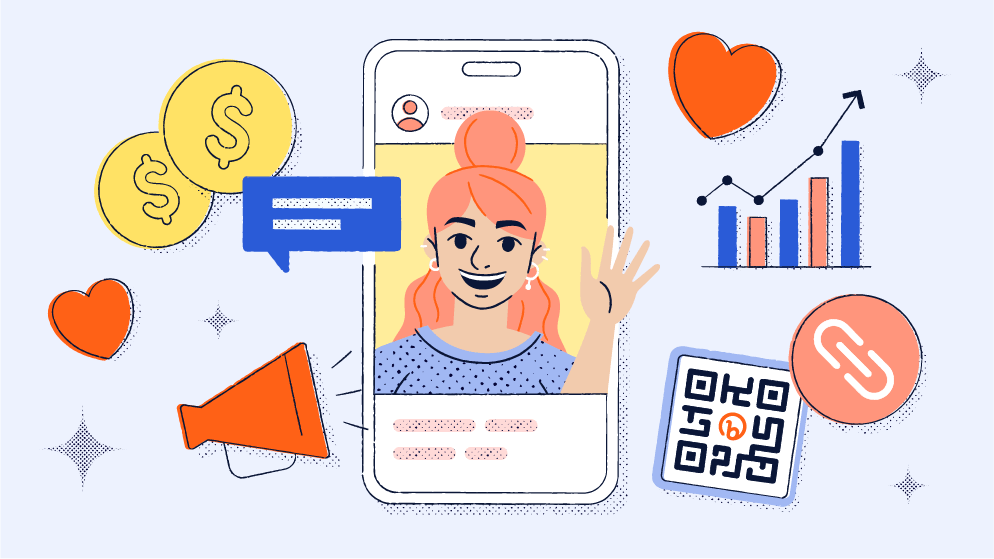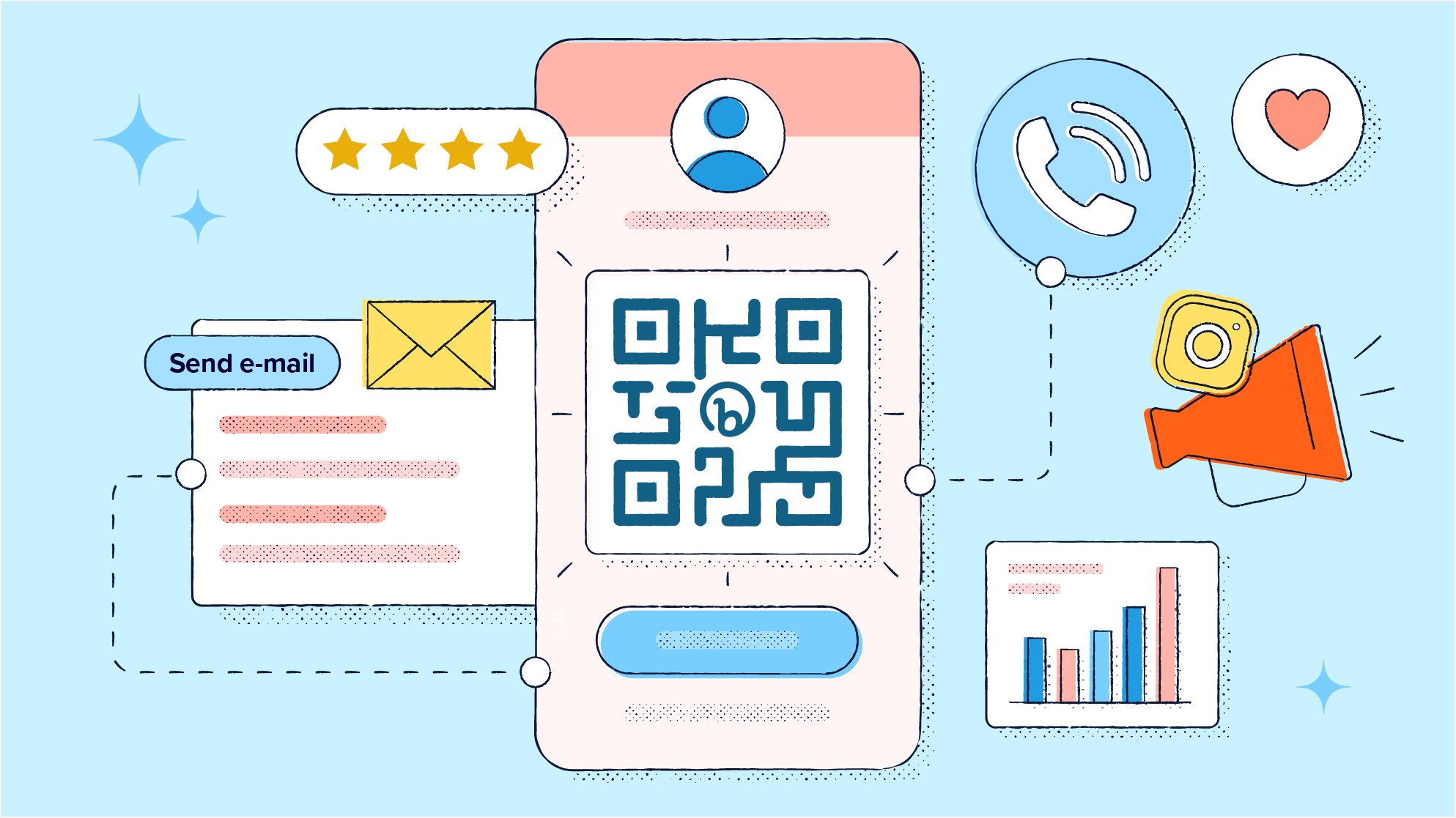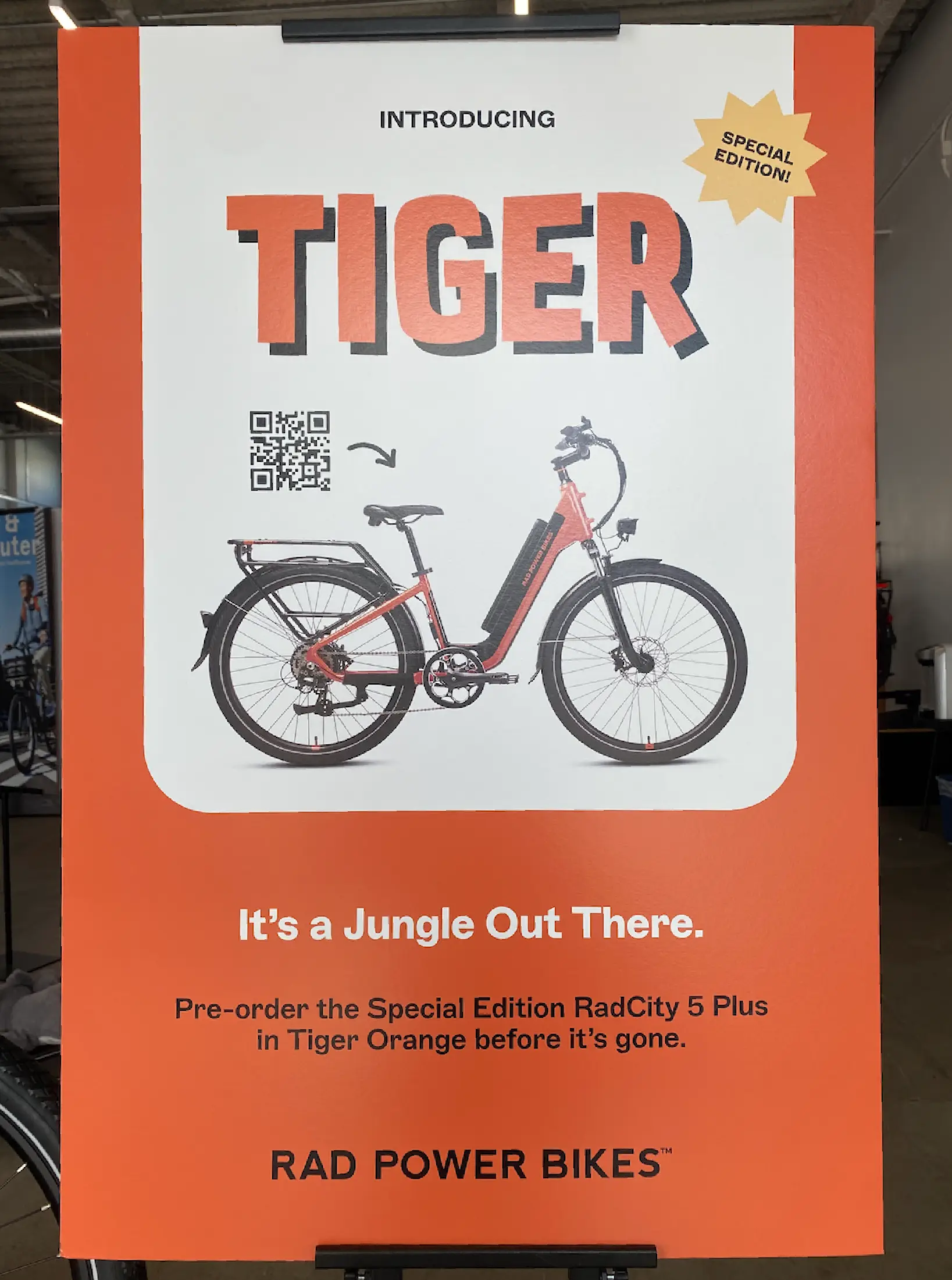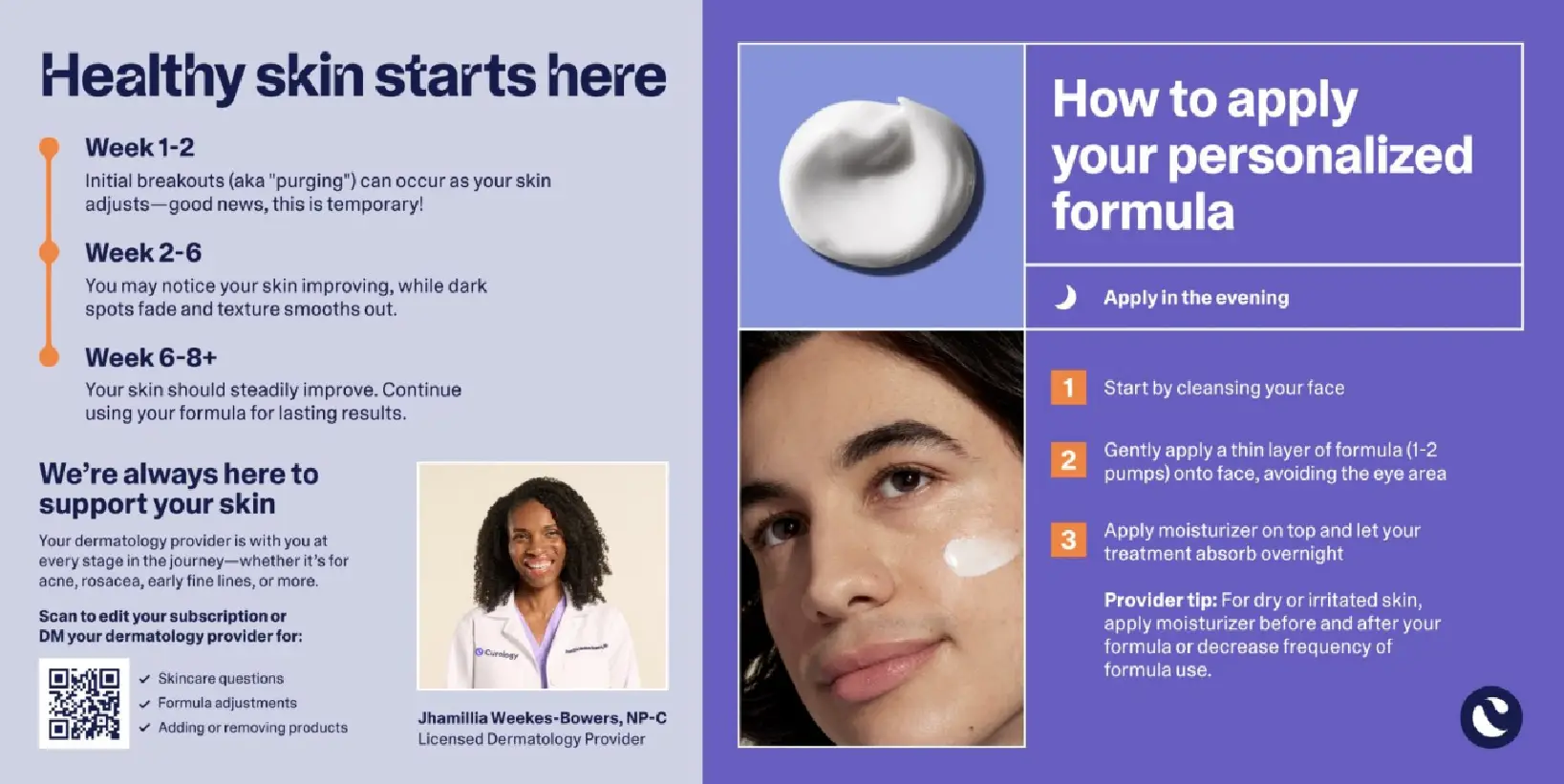
Think about the last time you bought something important. Whether it was a big-ticket item—like that fancy espresso machine you’ve been eyeing for years—or a must-have essential like a good pair of shoes, chances are you did a bit of research before buying. Maybe you checked out some brands on social media, read a few reviews, or even subscribed to a newsletter to unlock a discount. You’re then served some targeted ads online as you browse, and ultimately decide to check out the product in-store before swiping your credit card and sealing the deal.
In our highly connected world, the multi-stop shopping journey isn’t the exception—it’s the rule. Retail and consumer packaged goods (CPG) brands in particular need to adopt strong omnichannel marketing strategies to meet consumers where they are and usher them along the non-linear journey to purchase. Let’s dig into what omnichannel marketing is, why creating an omnichannel marketing strategy is a must, and how QR Codes can help you easily create connected shopping experiences.
What is omnichannel marketing?
Omnichannel marketing is the practice of engaging with consumers across several channels, both online and offline, and connecting those interactions to create a seamless, consistent journey. By interacting with consumers through social media, via SMS messages, in-person, and online, brands can boost sales, drive loyalty, build brand awareness, and create lasting customer connections.
Why omnichannel marketing works
The key to omnichannel marketing is not to think of each of your channels in isolation—in-store interactions versus online connection points. Rather, consider ways to connect those experiences for better traction and more compelling offerings. How can you drive consumers to your digital channels directly from your shelves or when they open an item for the first time? What data can you gather from in-store engagements to further online connections? How are your online interactions enhancing or encouraging an in-person physical experience with your brand?
Omnichannel marketing taps into behaviors that your audience has already adopted—they switch between apps on their mobile phones constantly, “changing channels” moment by moment. Brands need to keep up with customers throughout that journey, using context and data to match their exact needs at every turn.
This mindset is essential to compete with other brands for wallet share and attention. Your best chance of securing loyalty is to capture and compel customers from every channel and seamlessly send them from one to the other. So how do you actually do that? There isn’t just one way to embrace omnichannel marketing, but QR Codes are an incredibly helpful tool for connecting online and offline experiences—and they’re taking the retail and CPG industries by storm.
Adding QR Codes to your omnichannel marketing mix
From product packaging and inserts to in-store displays and out-of-home advertisements, QR Codes are popping up everywhere you look. They seamlessly bridge the physical and digital worlds, offering consumers an interactive and engaging way to access your brand’s content, promotions, or exclusive offers. Rather than expecting them to type a lengthy URL into their browser or track down product details on their own, shoppers can scan the small-but-mighty QR Code for a convenient, value-driven experience in seconds.
For retail and CPG brands in particular, QR Codes serve as a key driver of your omnichannel marketing strategy. By bringing together the digital and physical worlds, brands can create more convenient and connected experiences, and increase the likelihood of converting consumers from browsers to buyers. Connect with consumers in new ways and use QR Codes to:
- Share information about your brand’s sustainability practices
- Offer product comparisons to help consumers make more informed decisions
- Let shoppers explore online options that aren’t available in-store or place an online order
- Invite consumers to engage with exclusive content, videos, and giveaways
- Help consumers reorder or leave an online review after purchasing
As collecting customer data becomes more challenging—through changes like the fall of third-party cookies—channels that offer first-party customer insights are becoming more valuable, and QR Codes meet that need. With every scan, brands gain valuable insights into who and where their customers are and which calls-to-action, information, and campaigns are most compelling to them. They learn more about what consumers are looking for so that they can better tailor future campaigns and create content that their audience wants.
By incorporating QR Codes into your omnichannel marketing strategy, retail and CPG brands can bring consumers one step closer to buying—not just once but over and over again.

7 must-have omnichannel marketing strategies
QR Codes bridge in-store and at-home moments and have the power to drive revenue and build loyalty across an array of interactions. And when it comes to different use cases, the possibilities are truly endless. Let’s dig into seven ways you can use QR Codes to supercharge your omnichannel marketing strategy.
1. Product selection quizzes
The future of data collection is zero- and first-party data—information that your audience voluntarily gives your brand. Surveys and quizzes serve as valuable tools, offering interactions that enhance the customer experience with your brand or assist them in making informed product choices.
Include a QR Code on packages or shelves with a clear call to action like, “Take our quick quiz to find out which product is right for you.” You can engage shoppers digitally, learn what matters to them, and collect contact information to keep the conversation going. When you can reach them in their inbox, you can encourage them to buy the product you’ve recommended in stores again the next time they need it.
2. Endless aisles
Turn stockouts into omnichannel marketing opportunities by taking an endless aisles approach. Endless aisles let stores and brands alike drive shoppers to digital channels when a product is out of stock. With just a single QR Code, you can send shoppers to online options or alternatives, and allow them to order for at-home delivery or in-store pickup.
Endless aisles give shoppers an uninterrupted and convenient experience with your brand, giving them access to the products they need without having to make another stop. Plus, you get additional data through the ordering experience and via the QR Code scan so you can better understand and solve any potential supply chain issues in stores.
You can even use QR Codes to let customers join a waitlist for upcoming products, just like Rad Power Bikes does in its stores. With the scan of a code, customers can learn more about your offerings—like this special edition Tiger Orange e-bike—and pre-order on their own.

“Using QR Codes helps us have a more consistent customer experience across channels. It gives us the opportunity to seamlessly direct people from a retail store experience to our brand website, which is an important part of the customer journey.”
Lauren Rothering, Senior Brand & Product Marketing Manager at Rad Power Bikes
3. Try-on experiences
For CPG products like makeup, the selection process is highly individual and personalized. Whether someone’s shopping online or in-store, their options for trying new shades and styles have often been limited. But with the arrival of Augmented Reality (AR) try-on experiences, brands have an all-new channel for helping shoppers make the best possible choice for their needs.
Whether you want customers to download an app or explore a virtual try-on experience to test out your product, QR Codes are a quick and easy way to take them there—and drive revenue. Eyewear brand MOSCOT saw their revenue per visit among shoppers who engaged with their virtual try-on tech increase by a staggering 174%, proving that QR Codes can both improve consumer confidence and ultimately drive more conversions.
Use try-on offerings to expand and enhance the selection process, bring an in-person experience online, and increase customer satisfaction along the way. You can even let shoppers save their favorite option online so they know which one to buy next time.
4. Email sign-ups
While many marketers say it’s getting harder to break through the noise in cluttered inboxes, email marketing remains a key channel for most consumers. More than half (55%) say that it’s their preferred channel for communicating with businesses, and a whopping 90% of companies say that email marketing is important to their business’s success.
Email is a key channel to leverage as part of your omnichannel marketing strategy, particularly for CPG brands that face stiff competition and need to build loyalty to keep customers coming back for more. Brands can use QR Codes directly on product packaging and on in-store displays to ask for shoppers’ email addresses in exchange for discounts or free items, connecting the in-store experience to future online and in-store purchases.
5. Rewards programs
A rewards program is the perfect way to keep customers coming back to your brand. But you need to offer compelling incentives and a seamless, convenient experience to log points, track progress, and redeem rewards. Link straight to your rewards program from every package using QR Codes for quick and easy access.
Rewards exchanges are also especially powerful for strong brands that consumers love, like the sponge product Scrub Daddy. The brand offers a seamless Recycling Rewards program with sustainability as its incentive. Each Scrub Daddy package features a QR Code that provides customers with easy steps for sending used products back to the brand to be recycled into energy-efficient fuel. Each recycled sponge stacks up points for loyal customers, which they can redeem in exchange for Scrub Daddy products and even swag like sweatshirts.
6. Reorders and replenishment
Offline interactions don’t just happen in stores. They also happen at home when someone receives a product delivery or when they open your product for the first time. These are ideal moments for your omnichannel marketing strategy to take flight, as they let you engage customers when they’re experiencing (and enjoying) your product for themselves.
Add QR Codes to product inserts and let customers easily reorder your product with a simple scan whenever they’re ready. Take personalization to the next level by inviting customers to sign up for an email or SMS reminder on a designated date that invites them to reorder when you expect them to run out. This gives you another channel to engage with them and takes the work of reordering off their plate.
Plus, you can invite them to try new products you’re sure they’ll enjoy based on their past purchases—skincare brand Curology uses Bitly QR Codes to do this with every box.

“We added QR Codes to the back of our universal inserts that now go out in every new box we ship. Customers can scan the QR Code to adjust their subscription, add or remove products, or even direct message with a dermatology provider.”
Becca Rudman, Brand Marketing Manager at Curology
7. Streamlined returns and exchanges
A little bit of convenience goes a long way, especially when a customer isn’t happy with their purchase. The more you can simplify their next steps when they need to make a return or exchange, the more you enhance their satisfaction and trust in your brand—even if they weren’t happy with the product the first time around.
If your customer isn’t satisfied or chooses the wrong item, you can simplify the return process by adding a QR Code to an insert or receipt with a clear call to action about the next steps they can take. Offer quick and easy exchanges for another size or color, and even suggest complementary items that might also meet their needs as they place their new order.
What’s next for omnichannel marketing
One major factor that’s sure to pave the way for QR Code innovation in the future is the transition from UPC barcodes to 2D barcodes, like QR Codes, by 2027. This means that information-rich QR Codes will be present on every package, giving brands the chance to provide shoppers with in-depth information and use data to customize their experiences.
With the ability to store information about a product’s history—from where it is in the supply chain to manufacturing details—brands will be able to streamline inventory management, authenticate products in real-time, and ensure easier returns. This transition makes investing in your omnichannel marketing strategy today an absolute must. By ensuring your brand is present both offline and online, delivering genuine value, and making convenience a priority, you’ll craft an experience that customers naturally love.